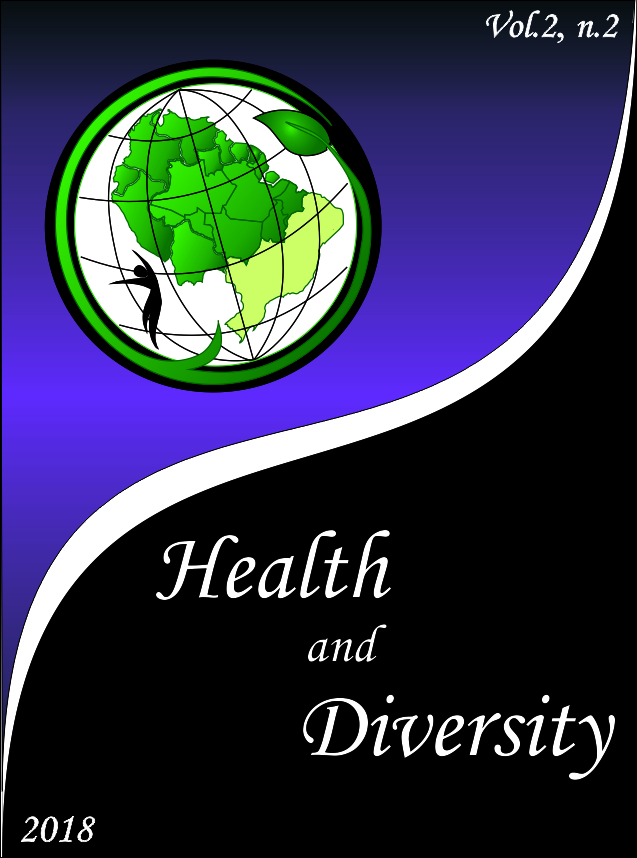Partially Empty Sella Syndrome associated with gonadotrophic axis deficiency: a case report
DOI:
https://doi.org/10.18227/hd.v2i2.7511Keywords:
Empty sella, hypogonadism, hypopituitarismAbstract
Empty thoracic saddle is a diagnosis made by Magnetic Resonance Imaging, which defines it as partial when less than 50% of the saddle is filled with cerebrospinal fluid (CSF) and the pituitary gland has a thickness ≥ 3 mm or total when more than 50% of the saddle is filled with cerebrospinal fluid. that 50% of the saddle is filled with CSF and the thickness of the gland is ≤ 2 mm in diameter. Associated with this condition, with prevalence of 8 to 35% in the general population, a high incidence of pituitary dysfunction was documented. This study aims to report the case of a male patient with hypogonadotrophic hypogonadism associated with the partially empty Sella. Coming from Coronel Mota Hospital, Boa Vista / RR, in follow-up at the Endocrinology outpatient clinic for diabetes control and thyroid nodule follow-up, the patient complains of reduced libido and erectile dysfunction. Magnetic resonance imaging (MRI), after identifying the low hormonal levels in the laboratory tests, confirming the clinical suspicion of hypogonadism, showed a hypophysis with a height of up to 0.3 cm, characterizing a partially empty túrcica saddle. It was then decided to treat the patient with testosterone replacement. Conclusion: Although the diagnosis of this syndrome is most frequently observed incidentally, the association with hormonal disorders makes it necessary to routinely screen for these changes in asymptomatic patients so that treatment is early, avoiding complications in the short and long term.
Downloads
References
Aruna, P; Sowjanya, B; Reddy, PA; Krishnamma, M; Naidu, JN. Partial Empty Sella Syndrome: A Case Report and Review. Indian Journal of Clinical Biochemistry, v. 29, n. 2, p. 253-256, 2014.
Bhasin, S; Cunningham, GR; Hayes, FJ; Matsumoto, AM; Snyder, PJ; Swerdloff, RS; Montori, VM. Testosterone Therapy in Men with Androgen Deficiency Syndromes: An Endocrine Society Clinical Practice Guideline. The Journal of Clinical Endocrinology and Metabolism, v. 95, p. 2536–2559, 2010.
Chiloiro, S; Giampietro, A; Bianchi, A; Tartaglione, T; Capobianco, A; Anile, C; de Marinis, L. DIAGNOSIS OF ENDOCRINE DISEASE: Primary empty sella: a comprehensive review. European Journal of Endocrinology, v.1, p. 275-285, 2017.
De Marinis, L; Bonadonna, S; Bianchi, A; Maira, G; Giustina, A. Primary Empty Sella. The Journal of Clinical Endocrinology and Metabolism, v. 90, p. 5471–5477, 2005.
Drummond, JB; Martins, JCT; Soares, MMS; Dias, EP. Alterações da Haste Hipofisária e Suas Implicações Clínicas. Arquivos Brasileiros de Endocrinologia e Metabologia, v. 47, p. 458-466, 2003.
Fleseriu, M; Hashim, IA; Karavitaki, N; Melmed, S; Murad, MH; Salvatori, R; Samuel, MH. Hormonal Replacement in Hypopituitarism in Adults: An Endocrine Society Clinical Practice Guideline. The Journal of Clinical Endocrinology and Metabolism, v. 101, p. 3888–3921, 2016.
Fraietta, R; Zylberstejn, DS; Esteves, SC. Hypogonadotropic Hypogonadism Revisited. Clinics, v. 68, p. 81–88, 2013.
Ghatnatti, V; Sarma, D; Saikia, U. Empty sella syndrome – beyond being an incidental finding. Indian Journal of Endocrinology and Metabolism, v. 16, n. 2, S321-S323, 2012.
Junior, NA; Bertero, EB; Fregonesi, A; Nardi, AC; da Ros, CT; Rhoden, EL; Lorenzini, F; Facio, FN; de Faria, GE; Aita, GA; Torres, LO; Glina, S. Recomendações em Distúrbio Androgênico do Envelhecimento Masculino. São Paulo, Sociedade Brasileira de Urologia, 2017.
Rani, PR; Maheshwari, R; Reddy, TSK; Prasad, NR; Reddy, PA. Study of prevalence of endocrine abnormalities in primary empty sella. Indian Journal of Endocrinology and Metabolism, v. 17, p. 125-126, 2013.
Vilar, L; Kater, CE; Naves, LA; Freitas, MC; Fleseriu, M. Endocrinologia Clínica, Rio de Janeiro, Guanabara Koogan, 2016.
Zuhur, SS; Kuzu, I; Ozturk, FY; Uysal, E; Altuntas, Y. Anterior Pituitary Hormone Deficiency in Subjects with Total and Partial Primary Empty Sella: Do All Cases Need Endocrinological Evaluation. Turkish Neurosurgery, v. 24, p. 374-379, 2014.
Downloads
Published
How to Cite
Issue
Section
License

This work is licensed under a Creative Commons Attribution-NonCommercial-NoDerivatives 4.0 International License.

Este obra está licenciado com uma Licença Creative Commons Atribuição 4.0 Internacional.







